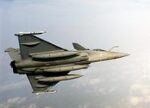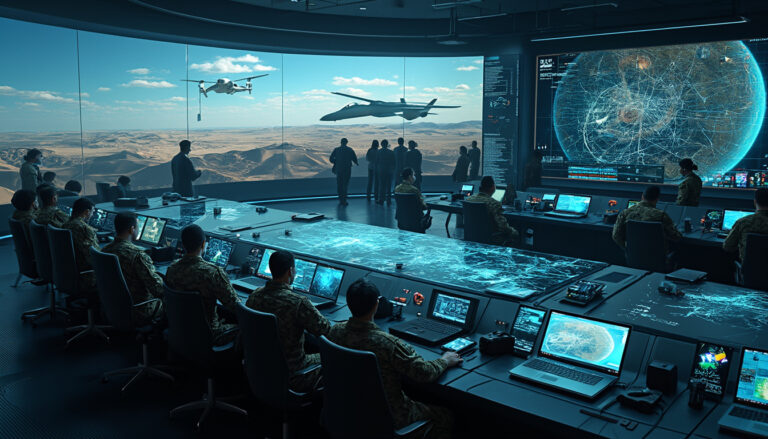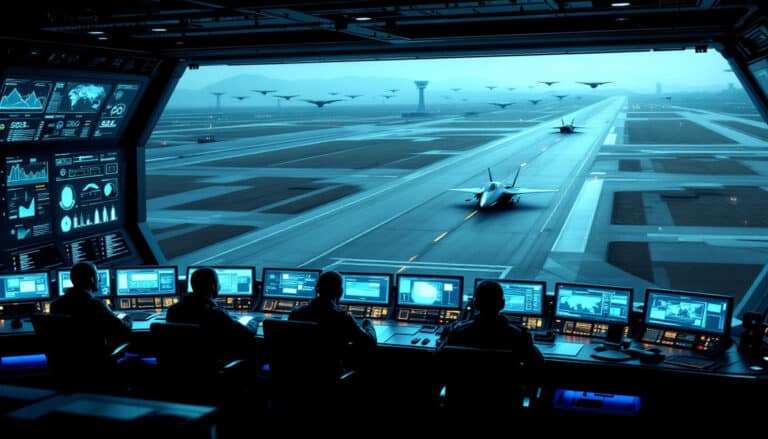BAE Systems Australia celebrates a major milestone in military shipbuilding.
The first steel cut for the Hunter-class frigates has been officially completed.
A new production contract has also been signed, sealing this partnership.
This symbolic moment, inaugurated by South Australian Premier Peter Maklinauskas, marks the beginning of the construction of the first frigate, HMAS Hunter, scheduled for 2032. With full operational capability expected by 2034, this anti-submarine frigate (ASW) will integrate advanced technologies and state-of-the-art stealth capability. The Hunter program promises to significantly enhance Australia’s naval capabilities, providing flexibility through its modular mission bay. BAE Systems thus positions itself as a key player in the country’s future maritime defense.
Table des matières
ToggleThe symbolic steel cut: a first step towards Australia’s naval future
June 21 marks a significant milestone for the Royal Australian Navy with the official steel cutting ceremony for the first Hunter-class frigate. This event, orchestrated by BAE Systems Australia at the Osborne shipyard in South Australia, symbolizes the launch of an ambitious project aimed at strengthening the country’s maritime defense capabilities. The steel cutting, a crucial element for the structure of the frigate, was carried out by South Australian Premier Peter Maklinauskas, highlighting the strategic importance of this initiative.
The flagship frigate, HMAS Hunter, is scheduled to be completed by 2032 and fully operational by 2034. According to the CEO of BAE Systems Australia, Ben Hudson, this frigate will be one of the most technologically advanced in the world, capable of various missions thanks to its modular bay. “Hunter will be one of the most technologically advanced and stealthy anti-submarine frigates in the world,” said Hudson, emphasizing the growing importance of anti-submarine warfare in modern naval strategies.
This first step represents not only a technical advance but also a strong commitment to Australia’s maritime sovereignty. By investing in cutting-edge frigates, the country enhances its capability to protect its vast territorial waters and maintain its strategic presence in the Asia-Pacific region.
The technical specifications of the Hunter-class frigate
The Hunter-class is distinguished by its numerous technological innovations, making each frigate a major asset for the Royal Australian Navy (RAN). Inspired by the British design Type 26 Global Combat Ship, these frigates incorporate an improved vertical launch system (VLS), increasing from 32 to 96 cells in the Guided Missile Frigate (GMF) variant.
This significant increase in VLS allows the frigates to employ a wider range of missiles, thus enhancing their offensive and defensive capabilities. However, this modification comes with a compromise on some advanced anti-submarine equipment, such as the towed sonar, which has sparked debates among defense analysts.
Furthermore, the modular bay of the frigate allows for increased flexibility, enabling each ship to quickly adapt to different missions, whether it be maritime surveillance, combating underwater threats, or protecting essential communication routes. This modularity ensures that the Hunter frigates remain operational and relevant in the face of rapid changes in the military domain.
The innovations do not stop there. The Hunter-class vessels are designed to be stealthy, with advanced stealth capabilities that reduce their radar and acoustic signatures. This makes them particularly effective in anti-submarine operations, where stealth is essential to detect and neutralize potential threats without being detected.
The economic and industrial impact of the BAE Systems project for Australia
The launch of the Hunter-class project represents a major opportunity for the Australian economy and its defense industry. With the planned construction of six frigates, BAE Systems Australia is committed to creating and maintaining a skilled workforce, thereby stimulating local employment and technological skill transfers.
Craig Lockhart, Managing Director of BAE Systems Australia’s Maritime division, highlighted the importance of this project for the country’s industrial development. “The construction of six frigates represents a considerable workload and we will be building ships at Osborne for decades,” he stated. This affirmation underscores BAE Systems’ long-term commitment to the Australian naval industry.
The project also includes establishing a skill base and strengthening the local supply chain. By investing in advanced technologies and collaborating with local suppliers, BAE Systems is contributing to the creation of a robust industrial ecosystem, capable of supporting not only the Hunter program but also other future defense initiatives.
Additionally, this initiative fosters innovation by encouraging research and development in key technological areas, such as advanced manufacturing, maritime engineering, and integrated defense systems. The economic impact goes beyond job creation, stimulating the entire local economy through sustained investments and strengthening Australia’s position as a leader in the defense industry.
The reasons behind the reduction in the number of Hunter frigates
Initially, the Royal Australian Navy planned to acquire nine Hunter frigates based on the British Type 26 design. However, a strategic reassessment conducted by the Australian government led to a reduction of this number to six, accompanied by the urgent purchase of 11 new multi-role frigates. This decision, announced in February, was influenced by several crucial factors.
The review report, led by former U.S. Navy Vice Admiral William Hilarides, questioned some of the capabilities of the Hunter frigates, particularly the initial number of vertical launch system (VLS) cells. Analysts criticized the fact that 32 VLS cells were insufficient for current requirements of modern naval warfare, prompting BAE Systems to develop the GMF variant with 96 cells.
Despite this improvement, the government report did not take into account the GMF variant, preferring to reduce the number of Hunter frigates and supplement the fleet with generic multi-role frigates. This strategy aims to prioritize the rapid deployment of new capabilities while maintaining a degree of operational flexibility.
Vice Admiral Mark Hammond, Chief of Navy, explained that the decision reflects current geopolitical realities, where Australia must respond quickly to emerging threats. “We must prioritize the speed of capability acquisition,” he stated, emphasizing that extending the life of existing Anzac frigates would have delayed the introduction of new frigates, leaving the navy without modern support for an extended period.
This reduction in the number of Hunter frigates fits into a broader strategy to balance operational capability needs and budget constraints, while ensuring the continuous modernization of the Australian naval fleet.
The strategic and military outlook for the Royal Australian Navy
The decision to reduce the number of Hunter frigates and introduce 11 new multi-role frigates reflects a strategic adaptation of the Royal Australian Navy (RAN) to contemporary challenges. This reorientation aims to strengthen Australia’s maritime presence in an increasingly contested region, marked by growing geopolitical tensions.
With the acquisition of additional multi-role frigates, the RAN can diversify its operational capabilities, increasing its flexibility to respond to a variety of missions, ranging from maritime patrol to counter-terrorism and the protection of essential communication routes. This diversification also allows for better adaptation to the rapid evolution of threats, whether conventional or asymmetric.
While powerful, the Hunter frigates are primarily designed for anti-submarine warfare. By reducing their number, Australia is focusing on a balance between specialized frigates and versatile ships that can adapt to various operational scenarios. This holistic approach not only enhances national security but also strengthens Australia’s ability to contribute significantly to regional and international security efforts.
Additionally, the RAN plans to complement its fleet with three Hobart-class destroyers, specialized in air warfare. This combination of Hunter frigates, multi-role frigates, and Hobart destroyers creates a strategic synergy, providing comprehensive coverage against potential threats, whether they arise from the air, sea, or underwater.
In summary, this reorganization of the Australian naval fleet is a proactive response to the current and future demands of the maritime domain, ensuring that the RAN remains a leading force capable of protecting national interests and maintaining regional stability.
The reactions and comments from BAE Systems and Navy officials
The reduction in the number of Hunter frigates has elicited varied reactions within BAE Systems Australia and the Royal Australian Navy. Craig Lockhart, Managing Director of BAE Systems’ Maritime division, expressed a positive outlook despite the initially reduced number of ships. “Six ships represent a significant workload and we will continue to build ships at Osborne for decades,” he affirmed, highlighting the company’s long-term commitment to the Australian naval industry.
Lockhart also emphasized the benefits of this decision, particularly in terms of enhancing local skills and developing the supply chain. “We are strengthening the workforce, establishing a skills base, and improving the local supply chain to enable Australia to build and maintain its own complex warships for generations to come,” he added.
On the other hand, Vice Admiral Mark Hammond, Chief of Navy, justified the decision by emphasizing geopolitical realities and immediate needs. “Replacing the eight Anzac frigates with 11 multi-role frigates allows us to respond quickly to current threats,” he explained. Hammond also noted that this strategy enables a modern and flexible fleet capable of adapting to future challenges while ensuring a constant and effective maritime presence.
Ben Hudson, CEO of BAE Systems Australia, reiterated the importance of collaboration between the government and the private sector to ensure the success of the program. “This is a moment of pride for all of us at BAE Systems Australia,” he stated. Hudson also stressed that the Hunter frigates continue to embody high technological standards, even with the reduced number, and that they will play a key role in Australia’s maritime defense.
In conclusion, the comments from BAE Systems and Navy officials reflect confidence in the adopted strategy while acknowledging the challenges and opportunities presented by the reduction in the number of Hunter frigates. The focus remains on enhancing local industrial capabilities, strategically adapting to contemporary needs, and pursuing a modern and versatile fleet capable of ensuring Australia’s maritime security for decades to come.
























